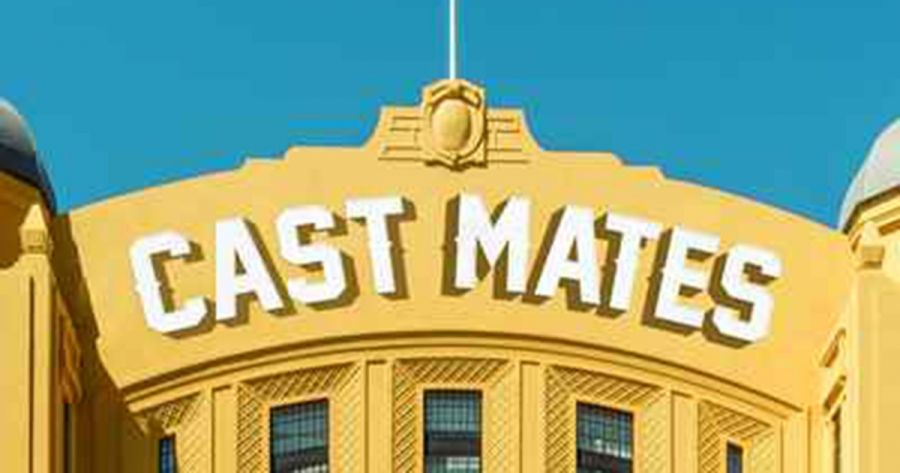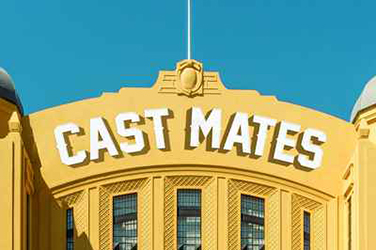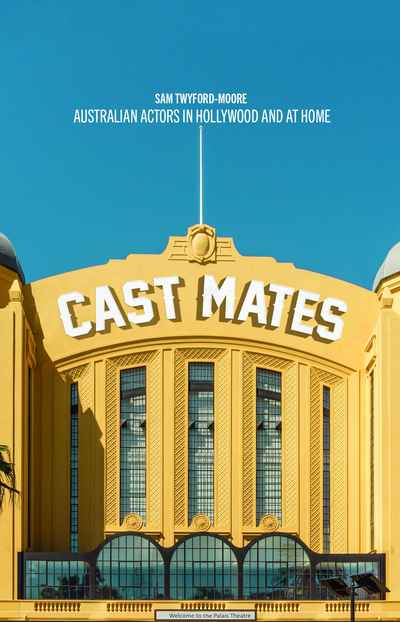
- Free Article: No
- Contents Category: Film
- Review Article: Yes
- Article Title: The long shadow
- Article Subtitle: Australian cinema’s fealty to Hollywood
- Online Only: No
- Custom Highlight Text:
A confession: I was a child actor. Never a child star, although certainly that was the intention. For years I endured the three-hour drive from Canberra to Sydney, preparing for my five-minute meeting with some Surry Hills casting director, whose first question would inevitably be ‘How’s your American accent?’ The zenith of my career was a thirty-second commercial for the orange-flavoured soft drink Mirinda, a merchandising tie-in with the release of Spider-Man 2, shot at Fox Studios on a full-sized replica of a New York subway carriage. On the soundstage next door, Baz Luhrmann was directing Nicole Kidman in their famously extravagant campaign for Chanel No. 5. There we all were: Australians in Australia, pretending to be Americans for America. Even at that early age, I sensed that Australian cinema existed in the long shadow of Hollywood, and that there has always been, as Sam Twyford-Moore expertly describes in his new book, ‘some kind of psychic gangway between Sydney and Los Angeles’.
- Featured Image (400px * 250px):

- Alt Tag (Featured Image): Jordan Prosser reviews 'Cast Mates: Australian actors in Hollywood and at home' by Sam Twyford-Moore
- Book 1 Title: Cast Mates
- Book 1 Subtitle: Australian actors in Hollywood and at home
- Book 1 Biblio: NewSouth Publishing, $34.99 pb, 320 pp
- Book 1 Cover Small (400 x 600):

- Book 1 Cover (800 x 1200):

History’s all about how you slice it, and Twyford-Moore has hit upon a winning formula: rather than committing to an in-depth biography of a single actor or attempting to cram a nation’s cultural history into a single tome, he spotlights four pre-eminent Australian performers whose overlapping careers span a full century of cinema. Tracking their commonalities and contrasts, he paints a rich portrait of Australia’s relationship to its own cultural output in the process. These actors’ ‘lives – and migratory patterns – can trace the story of how a nation’s film industry was founded, then faltered and failed, before finding itself again’.
After a whip-smart prologue framed around Russell Crowe’s 2018 ‘The Art of Divorce’ Sotheby’s auction (which included ‘a dinosaur skull … traded, over vodka … with Leonardo DiCaprio’), Cast Mates kicks off with Errol Flynn. Once revered but now rightly maligned by history, the Tasmanian Flynn may well have ‘served as [Americans’] introduction to the Australian accent’. As prolific an actor as he was a drinker, abuser, slaver, and ephebophile (he first laid eyes on his eighteen-year-old wife-to-be outside the courtroom where he was being tried for the statutory rape of another teenager), Flynn paralleled the cultural growing pains of Australia through his storied career (and sordid personal life); he was ‘an emblem not necessarily of great classical acting, but the misdeeds of a young nation’.
From here, Twyford-Moore turns to the infinitely more palatable (and talented) Peter Finch, whose posthumous Oscar for 1976’s Network and famous ‘mad as hell’ line delivery belie a fascinating career that spanned mediums and continents. Finch went from co-founding Australia’s own Mercury Theatre to having fiery encounters with the likes of Orson Welles, Vivien Leigh, and Elizabeth Taylor. He worked abroad during the driest spell in Australian cinema (‘just 25 films were made in the 1950s’), following a precedent many actors still adhere to. In the words of director Ken G. Hall, to leave Australia then ‘come back with American experience … greatly enhanced your stocks and market value’.
Next is David Gulpilil, the legendary Yolŋu actor who broke out internationally in Nicolas Roeg’s Walkabout (1971) before returning to work as a stockman in Arnhem Land, waiting many years for the industry to catch up with him. Twyford-Moore rightly assesses that ‘the story of Australian cinema has always been one about who exactly gets to make movies’ – but it is also one shaped by close calls and missed opportunity. Cast Mates contains as many tantalising alternative histories as it does real ones. Some are the stuff of pub trivia fever dreams – like Nicole Kidman and Paul Hogan nearly co-starring in Ghost – while others represent ‘stinging losses’, such as Gulpilil’s unrealised dream project, the cowboy epic Billy West and Lightning Thunderboy. One can only imagine what Gulpilil’s career, and Australian cinema by extension, might have looked like if Billy West had been the country’s breakout hit of the 1980s instead of Crocodile Dundee (1986), ostensibly made through ‘juicy tax concessions’ legislated only months after Billy West’s funding collapsed. Instead, we are left with actual history; Hogan snaps up properties in Malibu while Gulpilil, his Crocodile Dundee co-star, is rendered ‘practically homeless’. (The book’s extended detour into Hogan’s career is a bitter pill indeed; he is no Errol Flynn, but he’s no ally, either.)
Lastly there is Nicole Kidman, who brings Twyford-Moore’s history from the 1980s, through the heightened excesses of the millennium, and into the present day, where our finest actors have turned to television and the ghosts of silver screen titans haunt the content libraries of streaming services. Twyford-Moore reflects on Kidman and Luhrmann’s Australia (2008) as the cumulative endgame of a century of national cinema, in both its casting (‘an Australian New Wave answer to the Marvel Cinematic Universe’) and its marketing (‘film and tourism campaign together in one package’). Twyford-Moore is fully clued into the damning paradox at the heart of moviemaking: it is as much ‘soft diplomacy’ as cultural expression. But in its elegiac closing stretch, Cast Mates imagines an Australian cinema freed from its ‘servitude to the American film industry’; one designed not merely to ‘sell an idea of Australia to the world’, but one that might help us better understand ourselves.


Comments powered by CComment